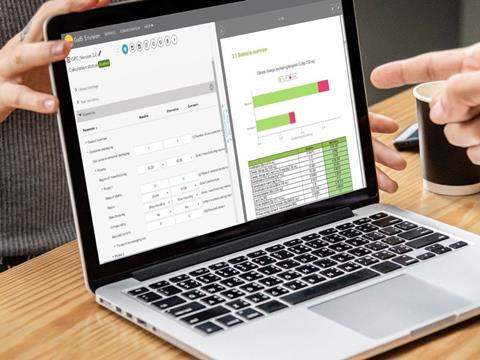
With the Sustainability Awards only two days away, finalist in the Best Practice Category Sphera talks about their GaBi Packaging Calculator and web-based LCA.
Congratulations on being selected by the international judging panel as a Sustainability Awards 2020 finalist! Could you please introduce your successful entry and what’s innovative about it?
Circularity and recyclability are at the forefront of environmental legislation today. So much so that lawmakers, producers, consumers and the public alike often mistakenly equate those concepts with ecodesign or green design. Our product is the first one on the market to enable designers and producers to have quick access to a broad range of environmental impacts, from carbon footprint to photochemical ozone creation potential, alongside circularity (Material Circularity Indicator). Through our Cooperation with Interseroh, Sphera’s GaBi Packaging CalculatoR+ also gives you information about the recyclability of your packaging. Our customers can compare alternative designs of their products in light of those various indicators over the entire life cycle, i.e. from manufacturing all the way to disposal/recycling, and make informed decisions. This is the basis of ecodesign. Delivered in an online, user-friendly, real-time environment, without the need for expert knowledge.
What are the environmental challenges in packaging that your entry addresses, and what impact do you hope it will make?
As mentioned before, the GaBi Packaging CalculatoR+ enables users to choose their focal environmental challenge. While carbon footprint is at the heart of environmental strategies of most corporations, recyclability & circularity are often handled as separate indicators and many more such as water and different types of pollution don’t make it onto the list unless it is a matter of compliance of NGO pressure. The environment, however, is a web of connections: You reduce one impact, and it might have a trickle-down effect to others in the best of circumstances, but it might also have a negative feedback on another environmental aspect. Our aim is to ensure that decision-making is supported by the consideration of multiple environmental aspects.
I’d like to ask you about the broader picture beyond your successful entry. ‘Sustainability’ in packaging is multi-dimensional – both in terms of objectives and challenges. Could you comment on the most important roadblocks you identify from your position in the value chain, and the kinds of solutions you would like to see addressing them (e.g. areas of technological innovation, collaboration, regulation)?
In our experience, misinformation is the biggest roadblock. Public opinion and legal frameworks oversimplify to an extent that materials or substances are singled out without a context. We strive to educate with our tool and of course, beyond the tool. We think that infrastructure of waste management is one key issue at the crossroads of innovation, regulation and global collaboration, which has to power to make packaging more sustainable. This requires investment, innovation in recycling technologies, collaboration to connect waste flows to the most valuable infrastructure and regulatory action that supports positive action rather than just outlawing certain activities.

















